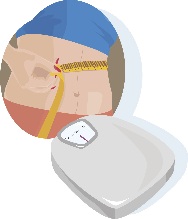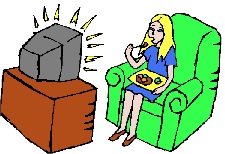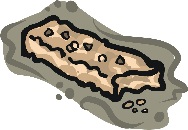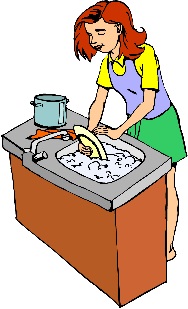 As the song says, it’s beginning to look a lot like Christmas. Kids are counting the days left until vacation, parents are panicking over everything they still need to get done, and stores are trying to sell you as much stuff as they can now so they won’t have to sell it to you for less during the After-Christmas Sales. It’s a good time to think about something we don’t think about often enough– NOT getting what we want when we want it.
As the song says, it’s beginning to look a lot like Christmas. Kids are counting the days left until vacation, parents are panicking over everything they still need to get done, and stores are trying to sell you as much stuff as they can now so they won’t have to sell it to you for less during the After-Christmas Sales. It’s a good time to think about something we don’t think about often enough– NOT getting what we want when we want it.
We live in a world of instant gratification. Credit cards have made it possible to buy things for which we don’t actually have the money, and the internet has made it possible to get stuff brought to us. We don’t even have to shift our sorry backsides to the mall anymore. And the digital revolution has made it possible for books, music, movies and games to come to us at the click of a mouse. We don’t even have to wait for the mailman. (BTW, my mailman is a lady– I just think the whole “chairperson” phenomenon of altering perfectly good words is dumb. I don’t feel excluded in the slightest when someone talks about “mankind” just because I have two X chromosomes.) Unfortunately, all this “buy it now, have it now” thinking has ruined our finances and our figures, and worst of all, it has robbed us of something a lot of us don’t even know we’re missing.
An-ti-ci-pa-tion…
Those of you who grew up with Carly Simon, sing it with me. Those of you who only know the song as a ketchup commercial should check out the joyful live performance here. When did we voluntarily give up the joy of anticipation? As a kid, I always had an “Advent Calendar” with little doors for each day, but they weren’t in order, so you had to search for the right number. Behind each number is, depending on whether you have a one-time calendar or a permanent one, either a picture of a small present or sweet treat, or the thing itself. It was never the actual treat that was the fun part, it was looking for the number, and then seeing one more open door that meant we were one day closer to Christmas. It was almost as much fun to get up every morning to open the Advent Calendar door as it was to get up to presents on Christmas morning, and it lasted a whole lot longer.
Anyone who has ever worked in a nursing home will tell you that mortality rates skyrocket after milestones. Somehow, people manage to live until Christmas, or Easter, or their birthday, and then die within days afterwards. Typically, they are counting on celebrations and visits from loved ones on those milestone dates, and the anticipation of that pleasure is literally enough to keep their heart beating. Once the pleasure is past, the letdown is fatal. Why should that be, when there’s always another Christmas or another birthday ahead? Maybe it just seems too long to wait. Anticipation is an active joy. There have to be steps, and a clear path. We’re marking off days, we’re making payments. (If you’re visiting a loved one in a nursing home for Christmas, make plans that day for another celebration in January, maybe Burns’ Night, January 25th. Just don’t threaten to bring haggis.) There’s a circle on the calendar, a goal in sight that every day brings closer.
Looking Back
When our grandparents bought something too big to pay for out of one paycheck, they put it on layaway. They could pay on it a little at a time, and when it was paid off, they got to bring it home. At Christmas time, this was a boon in several ways. They got to pay as they could, and get it paid off before they had extra expenses for holiday food and fuel; they also didn’t have to have a hiding place the kids wouldn’t get into, because the presents stayed at the store until it was time to wrap them and put them under the tree. Best of all, they could start the New Year fresh and debt-free. The payments weren’t a hardship, because they were building up to the day when whatever-it-was came home, shiny and new (and paid for).
A local family-owned furniture store here in San Antonio recently went out of business. This was no “Mom and Pop” place, it was a thriving chain with a number of stores and hundreds of employees. A victim of the bad economy? Not remotely. They were perfectly profitable. What drove them out of business was that the bank that handled their customer credit stopped doing retail finance. Why? Too many losses. Follow me here a minute. In the long ago, you bought a living room set on layaway, made payments, and took it home when it was paid off. Today, the store (or the bank behind them) finances you so you can take the living room furniture home right away. They get rid of inventory and you get furniture. Win-win, right? The trouble is, nine or ten months down the line, when the dog has put claw marks on the sofa cushions and grubby fingers have left juice-box stains on the arms, writing that check every month for something that is not remotely shiny or new anymore loses its appeal. So the customer stops paying, and the finance company repossesses the now virtually worthless used furniture and writes off the rest of the debt as a loss. Win-win just became lose-lose.
Psychologically speaking, we are just happier and more satisfied working towards a goal than we are paying off a debt.
The furniture store, in the business of selling items that are beyond the credit limit of most people’s VISA cards, and unable to find a new backing finance institution, had to either go into the finance business themselves or close. They closed. This is why most large car companies have their own in-house financing (GMAC, for example). Car companies also have an edge in that a car makes its biggest drop in value the second it’s driven off the lot, so a car that gets repo’ed after ten months still has a good chunk of its value remaining, and losses are considerably smaller. Back goes the car to the lot, to become the next financee’s immediate gratification.
Looking Forward
We were meant to be forward thinkers. Psychologically speaking, we are just happier and more satisfied working towards a goal than we are paying off a debt. Note this doesn’t have a thing to do with spontaneity or surprise. I hate surprises. My husband asked me how I got so good at gift wrapping, and I told him that it was from unwrapping and rewrapping my Christmas gifts whenever my mother left the house (this got me good at two things– gift wrapping and acting surprised). If you love spontaneity, you can still start a “travel fund” by setting aside money each month, and when you reach your goal, spin a globe or put a needle in an atlas. Working towards a goal does not equate to setting plans in stone, if that’s not how you like to roll (just make sure your goal is high enough to give you the wherewithal to get to wherever the pin lands).
Stick to your diet all week and then have the chocolate cake. Stick to your savings plan and then buy the shoes, plane tickets, etc. Remember in grade school when we had a poster on the wall of the classroom, and we got stars for every book we read? Get enough stars, get whatever the reward was (not to mention the daily reward of seeing that you had read more books than anyone else). Do it. Set a goal, and give yourself stars. And when you reach your goal, as soon as you feel the shiny and new wearing off, set a new goal. You’ll be amazed at the difference in your outlook when you shift your thinking from digging out of a hole to reaching for the stars.









